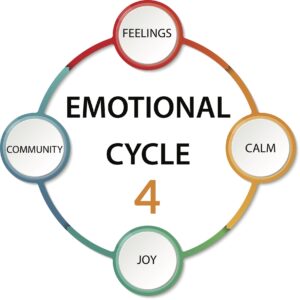
Turning on the news this week has been disheartening. As adults, it’s difficult for us to process the hate and oppression that are in our country—imagine how confusing and distressing it is for our students and children.
The topics of race and racism are ubiquitous and it would be irresponsible for us to ignore the questions and concerns our students and children may have.
What is racism?
Who does it hurt?
Why does it happen?
What role do I play in all of this?
What role can I play in fighting it?
How can I help?
Being a parent and educator often takes courage. In order to be the leaders our kids are counting on us to be, we have to find the strength to have uncomfortable and difficult conversations with them. It’s our responsibility to help our children navigate these disturbing times.
But, before engaging with kids, take the time to pause and examine your feelings; we want to respond with empathy, thoughtfulness, and prudence. Are you feeling overwhelmed, frustrated, or helpless? Are you doing your part to listen to and support the communities that are deeply affected by racism? So many voices are speaking up and creating and sharing resources.

We encourage you to show up, do your own research, and actively hold yourself accountable. (This anti-racism resource guide is a great place to start.) After all, as teachers and parents, we often lead by example.
Racism and racist bias begin at a shockingly young age. “Learning” racism can happen without parental influence. The racial stereotypes, inequity, injustice, and discrimination, which are so prevalent in society, shape our childrens beliefs—so if we’re not deliberate and careful to dismantle those negative notions, we could be adding to the issues of racism without realizing it. That’s why it’s so important to have these conversations and to also strongly lead by example!
When you feel prepared, start the conversation and let your child’s age and developmental level guide it.
Ask your children what they know and what they’ve seen. Check in with them emotionally and ask them how they are feeling. Validate their feelings and let them know what you are doing (either as a teacher or as a parent) to keep them safe. The more challenging part of the conversation is teaching them about the broader societal context of racism in order to try to explain the rage and anger of the protestors. (It’s also important to differentiate the looters and those causing violence from the peaceful protestors who are fighting for equality and Black lives.) By doing so, you’re teaching them about perspective-taking and helping them build empathy. This also helps shift the focus from fear and anxiety to understanding and compassion. It also helps them understand that the scary things they may be seeing on TV or hearing about are not aimed at them and that there are ways to help.

Once you explain things, ask them questions like:
How do you think those people are feeling?
Do you know why they are angry?
What do you do when you feel like something is unfair?
Do you have any questions?
Providing children with a controlled space to process what’s going on will help them safely navigate their emotions. Remember, these conversations might be uncomfortable, but that’s a part of the growing process. It’s okay to say you don’t have an answer; in fact, that may be an opportunity for you and your child to learn something new together!
Here are a few tips from Faith M. Sproul, PhD. for approaching the conversation:
- Check yourself, are you emotionally relaxed and calm?
- Let age (and prior discussions) guide your approach
- Use your family values and beliefs as context for what’s right or wrong
- View this as a process (and keep the conversation going)
- Leave with encouragement
You can follow up the conversation by sharing videos of peaceful demonstrations and protests or the civil rights speeches of Dr. Martin Luther King Jr. And continue the conversation by purchasing age-appropriate books that deal with discrimination and different perspectives, and feature characters of color as positive role models. (Here’s a list of 80 books that feature multi-culture protagonists, put together by the non-profit organization, Common Sense Media.)
By Spramani Elaun & Kristen Richter
© 2020 All Rights Reserved

